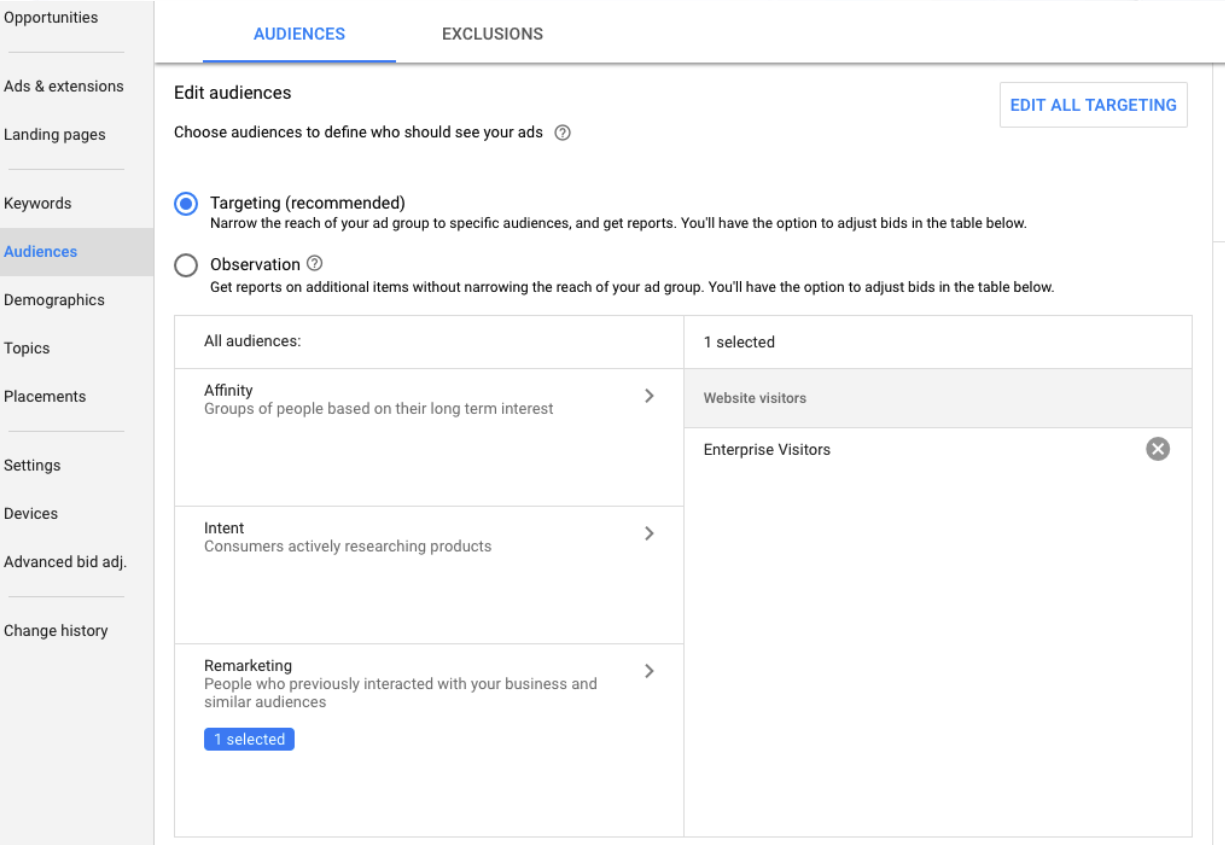Tools used
industry
Internet Software & Servicesfunction
Marketingchallenge
acquisitionOptimize your search retargeting ad spend
This recipe will show you how to save money on your search retargeting campaigns by not serving ads to customers, competitors, and other unwanted audiences.

Zachary Swetz Senior Product Manager at Clearbit
4 minutes
What is search retargeting? How is it different than site retargeting?
Before we jump into the recipe, it's worth answering a question we hear often: What is the difference between site retargeting and search retargeting?
Site retargeting entails serving ads to people who've already visited your website. You've probably seen or experienced this — after visiting a site, you see ads for that company's products or services reappear as you browse other places. Google offers site retargeting via remarketing lists for search ads (RLSA).
Search retargeting on the other hand does not involve targeting people who've visited your website. Instead, it enables you to retarget people based on specific keywords they input into a search engine, most commonly Google. The goal with this retargeting approach is to serve ads that have already exhibited some level of intent for your company, products, or services.
Although the two retargeting tactics are very different in terms of who they target, they share the common problem of being susceptible to serving ads to the wrong people.
Examples of people that that you likely don't want seeing your retargeting ads, but have a good chance of seeing them anyway, include:
- Your own team
- Direct partners and competitors
- Existing customers (except for upsell of renewal campaigns)
- Job seekers
- Non-ICP prospects (or "bad fit" accounts)
This is where creating exclusion audiences with Clearbit Advertising can help.
Why to optimize search retargeting ad spend?
One of the trickiest aspects of search retargeting is figuring out how to only show ads to certain, ideal people.
Whether they're existing customers, competitors, or even prospects that don't fit your ideal customer profile (ICP), the last thing you want is to spend any advertising budget retargeting people that will never end up buying your products or services.
With this simple recipe, you'll learn an optimization tactic to exclude the people who you don't want your retargeting ads to reach. This'll help you spend advertising dollars more efficiently and reserve more of your budget for the target audience.
Step 1: Create a new exclusion audience
First, log in to Clearbit X.
Clearbit X is the platform that houses Clearbit Advertising and Clearbit Alerts products.
Within your Clearbit X UI, navigate to the Audiences tab and click Create New Audience. From there, select Advertise to Website Visitors.

This will allow you to define an audience that you can tell Google not to serve ads to (a.k.a. your new exclusion audience). Without these people catching sight of your ads, you'll get better return on your send.
Step 2: Define who shouldn't receive your ads
Use the attributes provided by our audience builder to define exactly who you don't want to spend money on with your retargeting campaign.
If you're unfamiliar with what targetable attributes Clearbit offers, options include all of Clearbit's 100+ business attributes, visit behavior on your website (including week-over-week changes), and synced fields from your Salesforce account.
In the example below, we are defining an exclusion audience that contains current customers and non-ICP prospects.
Remember, the plan is to tell Google to exclude this audience, so we want the audience to be comprised of people we don't want to serve ads to!

Step 3: Sync your exclusion audience to your Google account
Now that you've defined your audience, simply select the Google account you use from the dropdown and click Create & Sync Audience.
This new audience will start populating in your Google dashboard. Once it does, go in and update your Google search remarketing campaign to now exclude this audience.

Quick recap
By using Clearbit Advertising to create exclusion audiences for your Google search retargeting campaigns, you'll take a massive step forward torwards running more targeted, efficient advertising. No more wasted ad spend on people who'll never purchase from you.
All it takes is:
- Creating a new exclusion audience in Clearbit
- Defining that audience with Clearbit, website visit, and Salesforce data attributes
- Syncing that audience with Google Ads
That's it! Here's to more budget being left over to reach more of your future customers. 🚀
FAQs
What is keyword search retargeting?
Search retargeting enables you to retarget people based on specific keywords they input into a search engine, most commonly Google. The goal with this retargeting approach is to serve ads that have already exhibited some level of intent for your company, products, or services.
What is website retargeting?
Website retargeting, or site retargeting, entails serving ads to people who've already visited your website. You've probably seen or experienced this after visiting a website, only to see ads for that company's products or services reappear as you browse other websites. Google offers site retargeting via remarketing lists for search ads (RLSA).
Join our newsletter
Engaging stories and exclusive data, designed for our best customers. One useful issue each month.